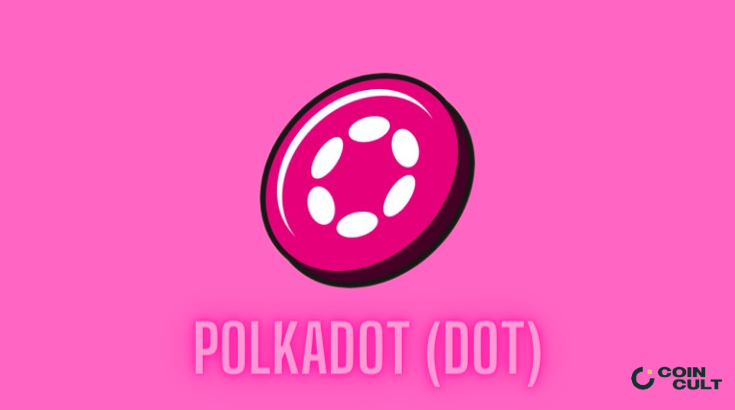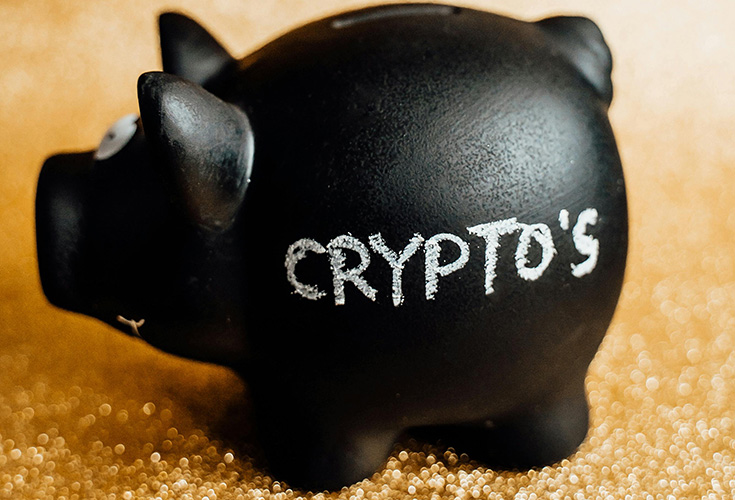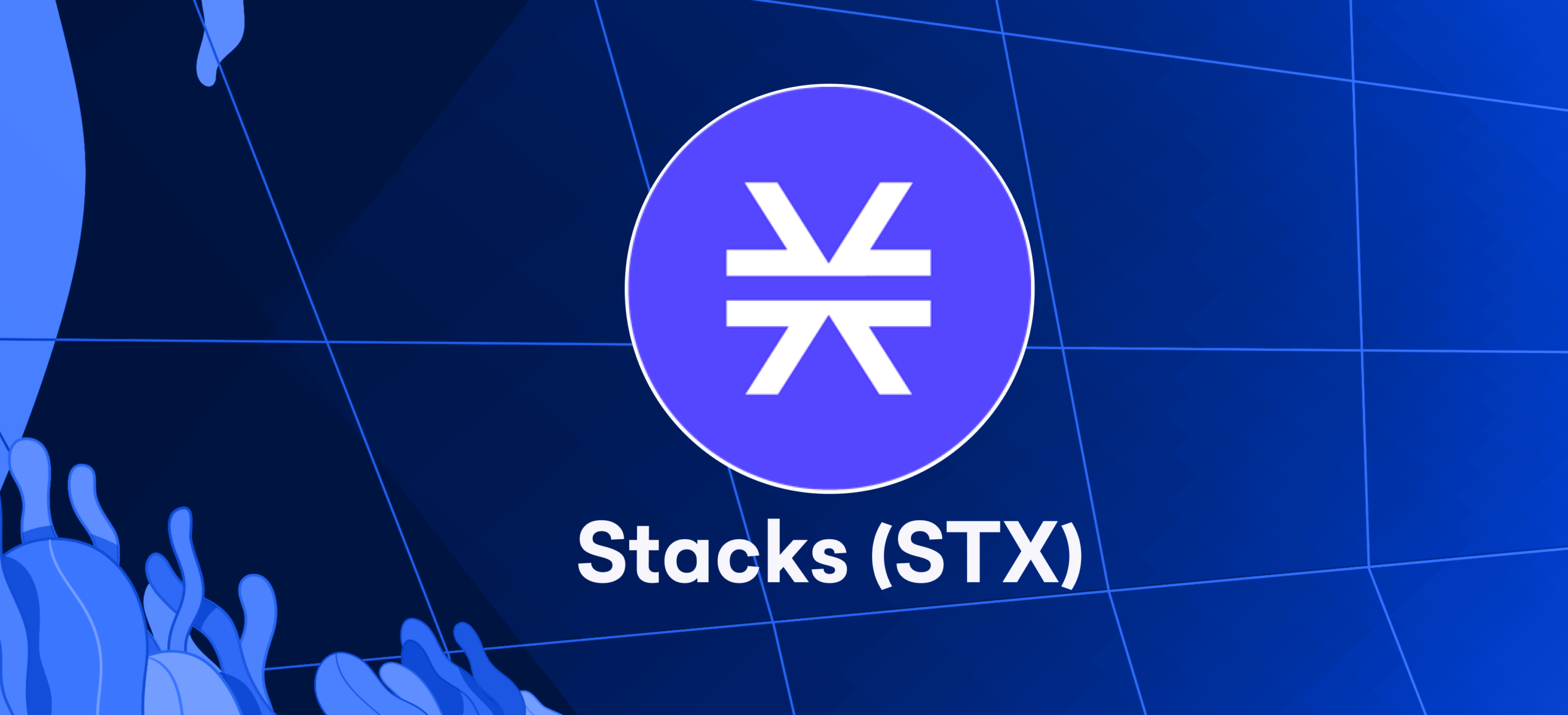
Polkadot is gaining popularity as a cryptocurrency that seeks to offer more than just being a digital coin like Bitcoin or Ethereum. It’s referred to as DOT, and it has the potential to create boundless opportunities in the world of decentralized systems.
Essentially, Polkadot serves as an innovative network that connects different blockchains allowing them to communicate with one another. Envision it as an enormous city where every building can trade information freely!
Before Polkadot, each blockchain was like an island. They couldn’t easily share data or work together. Polkadot resolves this issue by interconnecting these separate blockchains, leading to a stronger and more efficient network.
What is Polkadot?
Polkadot is a crypto project that emerged in 2016 with a proof-of-stake (PoS) concept. The primary aim behind the blockchain platform is to ensure interoperability among various blockchains, enhancing communication across networks.
Unlike traditional blockchains with unique structures, Polkadot seeks to link these individual networks effortlessly and securely. At present, Developers working towards this end are primarily focused on simplifying and securing connections between various blockchains.
Led by Dr. Gavin Wood, a British computer programmer and co-founder of Ethereum, the Polkadot team is committed to enabling communication between blockchains and decentralized applications (dApps).
Gavin Wood, a pivotal contributor to Polkadot’s development, had made significant contributions to the creation of Solidity, the coding language that enables smart contracts on Ethereum.
However, he left the Ethereum team in 2016 to tackle challenges such as high gas fees, slow transaction speeds, and network congestion. These issues led many to view Polkadot as a contender to Ethereum.
What Is The Polkadot Coin?
The Polkadot blockchain has its native coin, the DOT. Validators and nominators can secure the Proof-of-Stake algorithm by locking their DOT on the Relay Chain, enabling them to receive DOT rewards.
DOT holders can vote on blockchain proposals or during Parachain auctions using their coins. Furthermore, Polkadot ecosystem users will have to pay gas fees to interact with it using DOT as a currency. If there is an increase of activity and applications within the Polkadot blockchain ecosystem,the value of DOT should gradually appreciate over time.
How Does Polkadot Work?
Developed by the Web3 Foundation and Parity Technologies, Polkadot’s protocol is designed to connect permissioned and permissionless blockchains and oracles, allowing these different entities to share information and functionality.
Polkadot’s architecture consists of multiple parts, each serving a specific function.
Relay Chain
The Relay Chain is the major chain of Polkadot, providing the network’s security and consensus. Other chains, known as parachains, attach to this main chain.
- The Relay Chain uses a variant of the Proof-of-Stake (PoS) consensus algorithm called Nominated Proof-of-Stake (NPoS).
- The chain is maintained by validators responsible for validating proofs from the parachains and participating in the consensus protocol.
Parachains
Parachains are sovereign blockchains that use the security provided by the Relay Chain. Each parachain can have its design, tokenomics, and governance structures.
- Parachains connect to the Relay Chain and provide the network with scalability by processing transactions in parallel.
- They can be customized for specific use cases like smart contracts, identity management, or finance.
Parathreads
Parathreads are similar to parachains but with a pay-as-you-go model. This makes them a more economical choice for blockchains that don’t require continuous connectivity to the network.
- Parathreads share the same security and functionality as parachains but offer a more flexible, cost-effective solution.
- They are ideal for projects that don’t require constant access to the network’s resources.
Bridges
Bridges are special types of blockchains that allow Polkadot to communicate and interact with other networks like Ethereum or Bitcoin.
- Bridges enable the transfer of any type of data or asset between Polkadot and other blockchains.
- They open the door for cross-chain integrations, extending the reach and functionality of Polkadot.
Staking And Bonding On Polkadot
Polkadot is a layer 1 crypto platform that uses Nominated Proof of Stake (NPoS), which allows you to stake or soft stake your DOT to earn rewards. Additionally, staking your DOT tokens can help secure the network and increase your holdings of this valuable asset.
The average return of staking DOT varies from 6% to 21.79%, depending on the exchange, the fees, and the criteria. You can use a staking rewards calculator to estimate your passive income based on the amount, length, and the APY of staking DOT.
Staking DOT requires a minimum of 10 DOT and involves a bonding and nonbonding period of 28 days, during which you cannot trade or earn rewards on your tokens.
Polkadot’s inflation rate is fixed by design to be 10%, which means your staked DOT will decrease in value if your annual reward is less than 10%. Polkadot is a relatively new and versatile blockchain network that supports other chains and projects.
How To Stake On Polkadot
There are four ways to stake natively on Polkadot:
- Joining a nomination pool
- Opening a nomination pool
- Nominating directly
- Running a validator
Joining A Nomination Pool
If you don’t want to manage your nominations or have less than 300 DOT, you can join a nomination pool with just 1 DOT. Benefits (and penalties) are shared proportionally and must be claimed manually. DOT in pools can’t be used for governance.
To join a nomination pool, you need to:
- Create a Polkadot account if you don’t have one yet
- Navigate to Network > Staking > Pools page on Polkadot-JS UI
- Choose a pool that suits your preferences and click on Join
- Enter the amount of DOT you want to stake and confirm the transaction
Opening A Nomination Pool
You can create a nomination pool and invite others to join by becoming validators if they are confident enough in their ability to select trustworthy validators. This could lead to establishing a community and building a reputation as an expert nominator.
To open a nomination pool, you need to:
- To create a Polkadot account, navigate to the Staking > Pools page on Polkadot-JS UI.
- Click on the + Pool button in the top right corner.
- Choose your Stash and Controller accounts from the drop-down menu; using two separate accounts is recommended for security reasons.
- Choose an amount of DOT to bond; leave a small sum of transferrable funds in both stash and controller accounts, as this will allow you to pay transaction fees when changing nominations or unbinding funds.
- Finally, decide where you want your reward destination taken – options include auto compound staking rewards or sending them into other specified accounts.
- After these steps, you can select up to 16 validators on Polkadot (24 on Kusama).
Nominating Directly
If you want to actively and regularly participate in selecting validators, you can nominate validators directly and still participate in governance. You can lose some DOT if a chosen validator misbehaves. DOT receives compounds automatically, just choose a payout schedule and watch as your tokens accumulate.
To nominate directly, you need to:
- Go to the Polkadot-JS UI Network > Staking > Accounts page to create a Polkadot account for staking.
- Hit the + Nominator button on the top right and select your Stash and Controller accounts from the drop-down menu (it’s recommended to use two separate accounts for enhanced security).
- Choose how much you want to bond, then pick a reward destination where your rewards will be sent – either an auto-compounder or an address.
- Once you’re finished with those steps, select up to 16 validators (24 on Kusama) after deciding which ones are best for you.
Running A Validator
Validating is like being a special computer guard for our network. Validators are offered rewards for good behavior but may also face DOT losses as a consequence of poor behavior.
How To Bond More DOT On Polkadot
If you want to increase your stake, you can bond more DOT to your existing stash and controller accounts⁴. To do that, you need to:
- On Polkadot-JS UI, navigate to Network > Staking > Accounts
- Click on the three dots and select “Bond more funds” from the menu
- Enter the additional amount you want to bond
How To Unbond DOT On Polkadot
If you want to withdraw your stake, you can unbond DOT from your existing stash and controller accounts. To do that, you need to:
- On Polkadot-JS UI, navigate to Network > Staking > Accounts
- Click on the three dots next to the stash account, and select “Unbond funds” from the menu
- Enter the amount you want to unbond
- Wait for the unbonding period of 28 days to complete
- Click on the three dots next to the stash account, and select “Withdraw unbonded funds” from the menu
Features of Polkadot
Polkadot aims to tackle key challenges faced by the industry with its novel approach to interoperability, scalability, and security. This blog post delves into the unique features that make Polkadot special.
Interoperability
Polkadot’s core design concept is interoperability, which means that different blockchains can interact with each other. This system works through a central relay chain and multiple parachains, each with unique features and applications.
All these parachains connect to the central relay chain, allowing them to share data and functionality effectively. By enabling seamless communication between various blockchain networks, Polkadot forms an interconnected network where they can work together cooperatively.
Scalability
Polkadot boasts scalability as a crucial aspect. By allowing multiple blockchains to function simultaneously, it handles higher volumes of transactions and operations seamlessly. This multi-chain strategy distributes the workload uniformly across the network, addressing the limitations posed by traditional single-chain platforms.
Security
Polkadot’s new shared security model has pooled security across the network. In this system, individual parachains no longer need to provide their own security but rely instead on the collective security provided by the entire Polkadot network.
This design enhances and boosts each individual parachain’s security profile and makes it easier for new blockchains to join the network without having to bootstrap their own security.
Governance
Polkadot has a unique on-chain governance mechanism in place to improve and update the network progressively. The DOT holders have the power to influence changes to the network by voting for proposed alterations, including fixes, upgrades, and protocol modifications.
Cross-Chain Message Passing (XCMP)
Polkadot’s XCMP protocol is a crucial component of its interoperability. This cross-chain message passing system allows parachains to effortlessly communicate with each other. With XCMP, transactions that involve multiple chains are executed efficiently and seamlessly.
Substrate Framework
Developers can use Substrate, a modular framework, to create custom blockchains that are compatible with the Polkadot system. This unlocks the potential and allows for a diverse range of blockchain uses and applications on its network.
Some Leading Projects On Polkadot
In the blockchain industry, Polkadot has gained investors’ trust and reputation with $140 million in funding. The Polkadot network enables interoperability among different blockchains; hence projects based on it can effortlessly interact with each other and even non-Polkadot blockchains. As of 2023, various exemplary ventures are running on the Polkadot network.
Kusama (KSM)
Kusama, often referred to as Polkadot’s “crazy cousin,” is a network that lets developers test new projects before implementing them on a chain. It was launched as a canary network for Polkadot but has since evolved into a standalone platform. Many projects are attracted to Kusama because of its highly scalable and interoperable sharded network.
Acala (aUSD)
Acala is a project that aims to bring decentralized finance (DeFi) into its ecosystem. The network operates on a dual protocol and supports a stablecoin called aUSD which is collateralized.
Additionally, Acala ensures stake liquidity through the Homa protocol. Token holders have complete decision-making power thanks to the fully decentralized nature of the network and voting process.
Moonbeam (GLMR)
Moonbeam is an exciting project offering full Ethereum network compatibility coupled with Polkadot’s capabilities to overcome scalability and cross-chain interaction limitations. The primary aim of this development is to establish a functional connection between Ethereum and Polkadot by integrating familiar Substrate-based APIs, which are in use by Ethereum users.
Edgeware (EDG)
Edgeware positions itself as a “self-improving smart contract blockchain,” providing a simple way to install such contracts on the Polkadot network. This technology is advanced by a treasury managed by selected network members.
Ternoa (CAPS)
Ternoa is the first blockchain explicitly designed for data transmission via NFT using Polkadot Substrate technology. The project aspires to establish itself as the leading decentralized storage network for NFT goods, offering a platform for creating time capsules with images, videos, or texts.
Robonomics (XRT)
Robonomics aims to provide secure and easily accessible cloud platforms managed by IT companies for over 1 million IoT digital twins. These digital twins are incorporated into ecosystem initiatives, enabling automated systems access to previously inaccessible resources while maintaining high-security standards.
Darwinia (RING)
Darwinia is a blockchain network that connects seamlessly with other blockchains, including Polkadot, Ethereum, and TRON, through cross-chain technology. This makes Darwinia highly interoperable. Because of its compatibility with different chains, this network can be used to create many applications such as DeFi platforms, cross-chain NFT trading markets, and games.
PolkaFoundry (PKF)
PolkaFoundry was created with the aim of making decentralized applications (dApps) more accessible and accepted by a wider audience. It provides various developer support services to become a decentralized substitute for cloud computing platforms in the future.
Polkastarter (POLS)
Polkastarter is a fundraising platform that connects entrepreneurs seeking funding with investors. Its success has sparked a boom in blockchain startups, as thousands of crypto enthusiasts seek to invest early in potentially promising ventures.
Advantages And Disadvantages Of Polkadot
Advantages of Polkadot
Some of the main advantages of Polkadot are:
True interoperability: Polkadot allows data or asset transfer across different blockchains beyond just tokens. By connecting to Polkadot, one can collaborate with a broad range of blockchains in the network.
Economic & transactional scalability: Polkadot allows for unparalleled economic scalability since it enables a common set of validators to secure multiple blockchains. Furthermore, Polkadot achieves transactional scalability by distributing transactions over several parallel blockchains.
Easy blockchain innovation: Using the Substrate framework, anyone can create a custom blockchain in minutes with remarkable ease. By connecting their chain to Polkadot, users are granted interoperability and security from day one with seamless integration into the network. This effortless development process facilitates growth within Polkadot’s ecosystem.
High energy efficiency: Polkadot’s next-generation nominated proof-of-stake (NPoS) model consumes much less energy than traditional blockchains. In recent research, it was found that Polkadot has the most eco-friendly protocol among other proof-of-stake types. Its yearly energy consumption matches approximately what 6.6 households in the US use yearly.
Security for everyone: Polkadot’s innovative data availability and validity scheme enables different chains to collaborate effectively while maintaining their autonomy. In this way, each chain can govern itself independently yet benefit from a shared security system that unites them all.
User-driven governance: Polkadot has a complex governance system that ensures that every stakeholder is heard. The network upgrades are done on-chain, giving the community autonomy and future-proof development without forking the network.
Disadvantages Of Polkadot
Some of the possible disadvantages of the Polkadot are:
Complexity: Polkadot is a complex system that involves multiple layers and components, such as relay chain, parachains, bridges, collators, validators, nominators, etc. This complexity may pose challenges for developers, users, and regulators to understand and use Polkadot effectively.
Competition: Polkadot is not the only project that aims to achieve blockchain interoperability and scalability. Other projects, like Cosmos, Avalanche, Cardano, etc., have similar goals and features. Polkadot may face competition from these projects regarding adoption, innovation, and market share.
Regulation: Polkadot operates in a highly uncertain and evolving regulatory environment. The legal status and treatment of Polkadot and its tokens may vary across jurisdictions and may be subject to change over time. Polkadot may face regulatory risks such as bans, restrictions, sanctions, or lawsuits that could affect its operations and reputation.
Polkadot’s Roadmap And Future
The evolution of Polkadot seems to be a fascinating development for entrepreneurs, developers, users, and investors. It holds exciting benefits for each party involved, making it an interesting journey to follow.
DOT is a governance token and also performs staking duties to secure the network or chain bonding. This indicates that incentivizing its usage by rewarding participants is one of the project’s primary objectives. Presently, DOTs are considered some of the most valuable incentives in crypto, with an annual yield of 10% on average.
The Polkadot platform’s reliable network and commitment to its roadmap make it a promising project in the blockchain industry. Its technological innovation, and economic potential put it among the most ingenious developments. The coming months will be critical in assessing its true capabilities.








